Weekly Safety Topic: DOT changes to Drug & Alcohol Regulations as of 1/1/20
- 1) All truck companies have to increase the percent of random tests from 25% of fleet to 50% of fleet.
- 2) All truck companies need to report positive drug or alcohol tests to an FMCSA clearing house.
Employers check this clearing house when drivers apply for jobs. I want to keep our drivers up on these industry changes and remind you of our KKW Policy. KKW is committed to providing a work environment that is free from drug and alcohol use. The use, sale, transfer or possession of alcohol, illegal drugs or controlled substances on company time or on company property, including company vehicles is prohibited. Any violation of this policy, including a positive test result will result in immediate termination. Call safety, if you have any questions.
Weekly Safety Topic: General Safety
The following reminders will assist you in transitioning from favorable to inclement weather driving conditions: Always wear your seatbelt! It will prevent you from being thrown from the truck and keep you in control. Know the handling characteristics of your truck under load to avoid losing control; Do not use cruise control, put full attention and concentration on your driving; Prepare to use all of your defensive driving skills, slow down, keep scanning the road ahead and around you, stay on the look-out for risky driving by others.

Weekly Safety Topic: Speeding
Speeding citations are reflected on your CDL including even when not driving a commercial motor vehicle. It could result in loss of driving privileges and job. The US DOT CSA safety measurement system scores drivers as well as motor carriers.

Traveling 65 mph in a 55 mph zone increases your odds of being in a collision by 31%. (ATRI) Speeding almost always increases liability in a crash situation. Observe reduced speeds in school, construction and hospital zones. Remember, as a professional driver the expectations are high but you are the person who may suffer the unfortunate consequences.
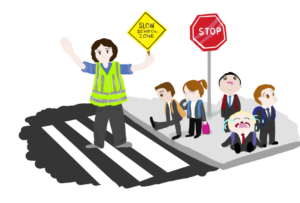
Speed limits posted on curve warning signs are intended for passenger vehicles, not large trucks. Large trucks should reduce their speed even further. Studies have shown that large trucks entering a curve, even at the posted speed limit, have lost control and rolled over due to their high center of gravity.

Weekly Safety Topic: Seat Belts
A driver cited for not wearing a seat belt during a roadside inspection will result in receiving the maximum number of points allowed and charged to the driver and the motor carrier. Every year during holidays, law enforcement agencies join forces day and night, from coast-to-coast, for an enforcement blitz that delivers on our message Click It or Ticket.
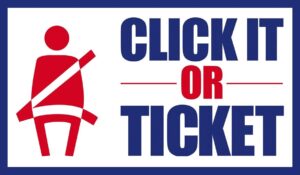
Seat belts provide the greatest protection against occupant ejection. Ejection from a vehicle generally causes the most severe injuries in a crash. 54% of truck drivers used seatbelts (82% of car drivers) 2010-Closing the Gap: 78% of truck drivers used seatbelts (NHTSA) Remember: A body in motion stays in motion. In a frontal collision at 30 mph, an unbelted person continues to move 30 mph; he/she hits the windshield at about 30 mph.

Seatbelt violations are considered a serious infraction by the FMCSA. A no-seatbelt violation is reflected in the unsafe driving BASIC, and can result in fines levied against the motor carrier and driver. But most important is the risk to the driver and other motorists or bystanders. The driver is exposed to serious or fatal injury while others must deal with the fact there is no driver to control the truck.

Weekly Safety Topic: Home Safety During The Holidays
November is the time of year we traditionally begin to decorate and prepare for the holiday season. One thing not to overlook is it coincides with beginning of the winter weather season as well. Be sure to replenish your winter weather supplies for snow, rain, ice and wind. Storms this time of year can have all these elements within single weather event.

The holidays are a time for gathering and celebrating with family and friends. Keep in mind the affect alcohol has on your motor skills and judgement. Try to moderate your alcohol intake and others as well. And always if you must travel arrange to have someone volunteer to be the designated driver or arrange for transportation services instead.

One of the pleasures of the holiday season is decorating homes and businesses. If you are going to decorate the outside of your home – requiring the use of ladders or working overhead – be sure you follow the warning and instruction labels on ladders provided by the manufacturer.

Holiday lighting is one of the most popular decorations for the holidays. However thousands of homes and businesses have fires due to faulty lighting displays. By taking a few precautions you will reduce the likelihood of fires from electrical wiring.

Weekly Safety Topic: Home Safety
Spring forward or fall back, it is a time of changing. Be aware of the lower lighting so you can adjust your driving to accommodate the change. Look for pedestrians at schools, shopping malls, and other places you drive around. Other vehicles without lights when twilight begins are going to be more difficult to see.

Reminder: it is a good time to change smoke/fire alarm batteries when changing to or from daylight savings time.
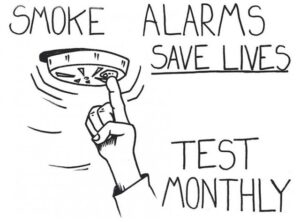
From summer to fall or winter to spring, changing seasons will require being prepared to handle different weather and road conditions. Some precautionary steps include ensuring you have supplies to handle winter weather. Check the condition of snow removal tools and equipment, stores of salt, windshield washer fluid and appropriate bad weather gear (including warm clothing, gloves, hats and windshield scrapers).
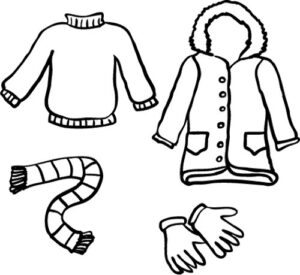
Weekly Safety Topic: Weather Hazards
As a commercial vehicle driver you are Captain of the Ship. Sea captains by tradition are responsible for returning their ships, sailors and cargo safely to port. You are the captain of the ship and your trip. You have many “crewmembers” from dispatchers, to mechanics to emergency personnel patrolling highways. By being prepared, equipped with the skills and knowledge to safely operate your truck and you will be ready to navigate your way safely home.

Know if there are any travel restrictions on your route, be prepared to be stranded or delayed, check weather and road conditions from TV or radio stations, or internet websites.

Weekly Safety Topic: Speeding
As a professional driver, you are expected to comply with the posted speed limits. For a large vehicle, the stopping distances are greater than smaller vehicles, and highway speed limits are often set differently for trucks from other vehicle speed limits. Lowering speed gives you the time to see ahead and the ability to adjust to adverse conditions as they develop.
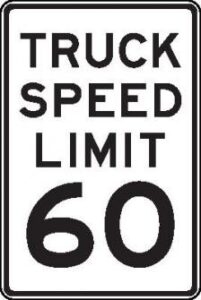
Speed limits posted on curve warning signs are intended for passenger vehicles, not large trucks. Large trucks should reduce their speed even further. Studies have shown that large trucks entering a curve, even at the posted speed limit, have lost control and rolled over due to their high center of gravity.

Traveling 65 mph in a 55 zone increases your odds of being in a collision by 31%. REMEMBER, as a professional driver the expectations are high but you are the person who may suffer the unfortunate
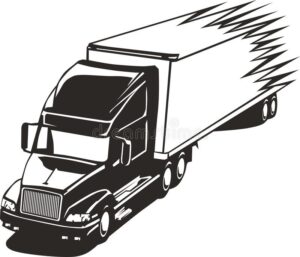 consequences.
consequences.
Weekly Safety Topic: Communication
Turn on your headlights to increase YOUR visibility to others. Being visible is critical to alerting other vehicles and pedestrians of your presence.

Dispatchers and drivers should check for any special situations or condition that could pose a safe driving hazard before a trip begins and the duration of the trip for delays, traffic issues, condition of vehicle or cargo if there are problems.

Be patient, do not let the behavior of others change your attitude about driving safely and making safe driving choices.

Weekly Safety Topic: Drugs & Alcohol
No driver shall perform safety-sensitive functions within 4 hours after using alcohol. Using alcohol would mean even one drink. No driver required to take a post-accident alcohol test shall use alcohol for 8 hours following the accident; or, until he/she tested.
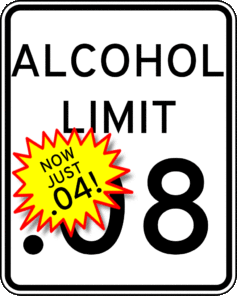
If you are required to submit a specimen for a random test, you must proceed immediately to the collection. Contrary to the urban legends circulating among some employees, immediately does not mean 2 hours. Immediately means that after notification, all the employee’s actions must lead to an immediate specimen collection.
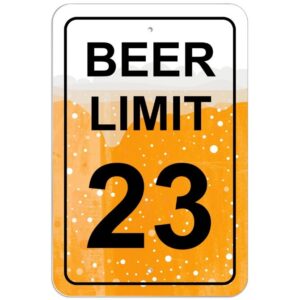
Weekly Safety Topic: Distracted Driving
Not focusing on the road ahead and mirrors can lead to being caught unaware of changing conditions or situations in front of and around your vehicle. How many seconds or minutes a day have you driven blindly while distracted? Focusing on an object, person, task, or event not related to driving affects the driver’s awareness, decision making and/or performance. Think of the number of things you do like that and then add the average amount of time you are not focused on a daily basis.
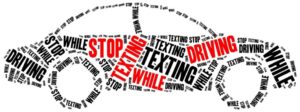
Driver inattention (both physical and cognitive) is a leading cause of traffic crashes, responsible for about 80 percent of all collisions, according to the national highway traffic safety administration – NHTSA. The #1 source of driver inattention is cell phones. How many times a day or week do you see others distracted using cell phones? Name other distractions you notice.

Excess drowsiness, or falling asleep, operating a cell phone or other hand-held device, talking on a cell phon or to another passenger, reading or looking at a map, eating or drinking, applying cosmetics, reaching for a CD or adjusting the radio, reaching for an object that is sliding off the seat, looking at surroundings and the number 10 reason is….insect inside the vehicle.

Weekly Safety Topic: Back To School
- Speed limit zones
- School zone area

- Children are awaiting School buses
- Always stop for School buses

- Be aware of youthful drivers
- Drive defensively!

Weekly Safety Topic: Health and Wellness
Drivers who are generally more health conscious in their beliefs and behaviors, and who are more physically fit, are more likely to maintain continuously high levels of driving alertness and attention.
The top critical health risks to commercial vehicle drivers are; smoking and tobacco use; obesity/being overweight; hypertension (high blood pressure); poor eating habits, diet, and nutrition, alcohol, drugs, and other chemical substances; lack of physical activity/physical fitness; and psychological stress and mental fitness
You are what you eat when it comes to good health so the more you understand how to make good dietary choices the better for your health. The same applies to understanding the benefits of counter measures to ward off fatigue. Fatigue countermeasures include obtaining a minimum number of hours of restful sleep, employing napping strategies, taking sufficient rest breaks from driving and paying attention to variations in mood, motivation and performance. With increased awareness it is more likely you can act on telltale warning signs of the onset of fatigue and waning alertness while driving.

Weekly Safety Topic: Following Too Close
Are you driving a safe enough distance from the vehicle ahead if it suddenly and unexpectedly stops? Drive at a speed that allows you tie to see and react to a panic stop of the vehicle in front of you.
How do I know if I am leaving enough space to the vehicle ahead? At a minimum there should be at least 4 seconds of separation between your vehicle and the vehicle ahead.
When road and weather conditions deteriorate or traffic volume increases you should add more time between you and the vehicle ahead. Extreme conditions such as rain, ice, snow, and fog require adding space until you are sure you have time to suddenly stop without striking the vehicle ahead.
It is almost a certainty that if you strike a vehicle from the rear you will be partially if not solely responsible, especially when visibility, weather conditions and vehicle controls are degraded.

Weekly Safety Topic: Spring Storms
If you live in a area prone to violent spring weather you can find advanced forecasts available through the local media, the national weather service or obtain a weather alert device to provide notice of possible or imminent storms.
Tornadoes: Listen for authorized watches and warnings.Take cover in a basement or first-floor, interior room without windows. If you are caught while walking or riding away from a safe shelter take cover in a ditch or depression.
Streams and river conditions can change dramatically during melting of snow or high levels of sustained rainfall. The force of flood waters can lift people , buildings, cars and trucks. Remember to inspect any trailers or tractors that may have been flooded while parked in a flooded area. Check for cargo and water infiltration of wheels, seals, brakes or other components.
Weekly Safety Topic: Distracted Driving

All regulated commercial vehicle drivers must follow the requirements regarding distracted driving using cell phones and other mobile communications devices. There are driver penalties up to $2,750 for the first and each offense thereafter. CDL privileges could be suspended and Employers could be fined up to $11,000.
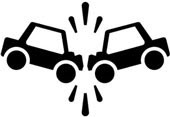
Talking on the cell phone increases crash risk by 4-5 times whether using use a hand free system or not.

Zero tolerance! First offense is automatic 5 day suspension, second offense is termination.
Weekly Safety Topic: Following Too Close
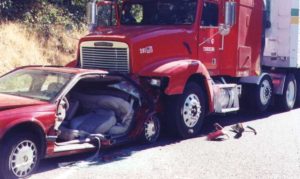
Are you driving a safe enough distance from the vehicle ahead if it suddenly and unexpectedly stops? Drive at a speed that allows you time to see and react to a panic stop of the vehicle in front of you.

How do I know if I am leaving enough space to the vehicle ahead? At a minimum there should be at least 4 seconds of separation between your vehicle and the vehicle ahead.
A safe distance allows for a safety cushion if unexpected hazards appear or road conditions change, or the vehicle ahead of you suddenly stops or changes direction. If someone cuts you off, reduce your speed to regain safe distance.
A safe following distance is the best practice to prevent a rear end collision. It is historically one of the most common and easily avoidable types of collisions. Don’t tailgate. Leave yourself enough space to react.
Weekly Safety Topic: Drugs And Alcohol
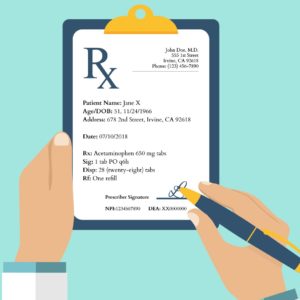
If you use a prescription or over the counter drug you need to be aware of the regulations governing their use as a commercial vehicle driver. The medication must be prescribed by a licensed physician to you. The prescribing physician has made a “good faith” judgement that the use of the substance prescribed or authorized dosage level is consistent with the safe performance of your duties. If one or more doctor is treating you, you must show that at least one of the treating doctors has been informed of all prescribed medications.
According to the FMCSA regulations, no employer shall permit a driver who refuses to submit to such tests to perform or continue to perform safety-sensitive functions including some situations drivers may not be aware including: Failing to provide a urine specimen for any drug test required, failing to provide a sufficient amount of urine when directed, failing to or declining to take a second test the employer or collector has directed the driver to take or failing to undergo a medical examination or evaluation, as directed by the MRO as part of the verification process.

If you are required to submit a specimen for a random test, you must proceed immediately to the collection. Contrary to the urban legends circulating among some employees, immediately does not mean 2 Hours. Immediately means that after notification, all the employee’s actions must lead to an immediate specimen collection.
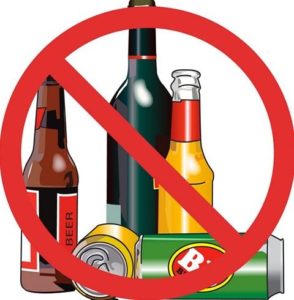
No driver shall perform safety-sensitive functions within 4 hours after using alcohol. Using alcohol would mean even one drink. No driver required to take a post-accident alcohol test shall use alcohol for 8 hours following the accident; or, until he/she is tested.
Weekly Safety Topic: Safely Navigating Road Construction Season
In 2017, there were 710 fatal crashes in work zones, resulting in 799 fatalities. Of those 710 fatal crashes, 30 percent (216 crashes) involved a large truck.
Driving in a work zone magnifies the importance of defensive driving skills and safe driving practices.
A driver should always approach a work zone in the same way he or she would approach any other adverse driving condition.
This includes being on the lookout for:
- Narrow lanes
- Merging vehicles
- Shifting lanes
- Slowing and stopping of traffic
- Unexpected work vehicles entering the traffic flow
- Speed limit adjustments
- Flaggers in the roadway
- Confused drivers
- Impatient/aggressive drivers
Managing vehicle speed and space can go a long way when it comes to safely navigating a work zone.
Proper speed management means operating at a speed that takes into account road conditions, visibility, and traffic speed and flow.
Space management includes managing all space, including ahead, behind, to the sides, above, and below the vehicle.
As part of managing speed and space, a driver must be aware of the fact that the stopping distance for a large truck is much greater than the stopping distance for a car.
The Federal Highway Administration (FHWA) estimates that an 80,000 pound (loaded) tractor-trailer needs about 325 feet to stop when traveling at 55mph on a dry, level road. This stopping distance is almost 50 percent greater than the stopping distance needed for a mid-size car.
Extra caution should always be used when driving at night, but caution is even more important when traveling through a work zone.
At night, hazards aren’t as easy to see and may not be recognized as quickly as they are during daylight hours. Put simply, we do not see as well at night as we do during the day. Visual acuity is reduced, side vision is poorer, and drivers’ eyes have a difficult time adjusting to abrupt changes from darkness to light and back to darkness.
A vehicle’s headlights play an important part in safely operating at night. They are the main way to see and be seen on the highway, including in a work zone.
In good weather, low beam headlights allow a driver to see about 250 feet ahead. Speed may need to be adjusted so the vehicle can be stopped within the range of the headlights. A driver should never overdrive the vehicle’s headlights. Driving outside the range of the headlights can adversely affect hazard recognition.
Weekly Safety Topic: Making A Safe Landing
Watch For School Zones:
- Speed limit zones
- School zone areas

Slow Down:
- Children are awaiting school buses
- Always stop for school buses

Be Aware:
- Be aware of youthful drivers
- Drive defensively
Weekly Safety Topic: Professionalism

Being Professional: When you are a professional commercial vehicle driver you know there are many rules to follow, including federal regulations, local and state laws and ordinances as well as driving related company policies. What separates a professional from a non-professional is understanding our society expects them to play by and follow the rules, no exceptions. To be able and meet those expectations a driver must be willing to accept coaching from others, be open to new ideas, willing to change, understanding the coach is perhaps not better than you, just that the coach can help you.

Being A Role Model: If you exhibit the qualities of a professional commercial vehicle driver other drivers value your advice and help. To be an effective “coach” be sure to demonstrate these traits: expertise, enthusiasm, clarity, empathy, respect and to lead by example.

The Right Stuff: Professional drivers know they have a responsibility for the safety of other drivers, co-workers, other motorists, company vehicles and equipment.
Weekly Safety Topic: Learn About Cannabidiol Oil

What is CBD: Cannabidiol Oil or CBD is extracted from the flowers and buds of marijuana or hemp plants. It does not produce intoxication; marijuana’s “high” is caused by the chemical tetrahydrocannabinol (THC). CDB has become the hot new product in states that have legalized medical marijuana. It is a non-intoxicating marijuana extract being credited with helping treat a host of medical problems. Experts say the evidence is scant for most of these benefits. Worse, CBD is being produced without any regulation, resulting in products that vary widely in quality.

DOT Drug Testing: Per our Medical Review Officer (MRO) who oversees all of our DOT and Non-DOT drug and alcohol testing for KKW, “It is not good to use CBD if you are going to perform a safety sensitive job. Also, using CBD can trigger a positive result on DOT and Non-DOT drug tests.”

Legal Position: Although, marijuana is legal in several states. CBD is considered, by the Drug Enforcement Agency (DEA), to be a controlled substance.

KKW Policy Number 210: The use, sale, transfer of possession of alcohol, illegal drugs or controlled substances on company time or on company property, including in company vehicles, is prohibited.

Bottom Line:
- Having CDB in possession on KKW company property, which includes our trucks, is a violation of company policy.
- Using CDB may trigger a positive result on drug tests.
Weekly Safety Topic: Distracted Driving

Mobile Phone Restrictions: regulated commercial vehicle drivers must follow the requirements regarding distracted driving using cell phones and other mobile communications devices. There are driver penalties up to $2,750 for the first and each offense thereafter. CDL privileges could be suspended and Employers could be fined up to $11,000.
Crash Risks: Talking on the cell phone increases crash risk by 4-5 times whether using use a hands free system or not.

Crash Statistics: a university study found drivers using cell phones had slower reaction times than drivers impaired by alcohol at a .08 blood alcohol concentration.
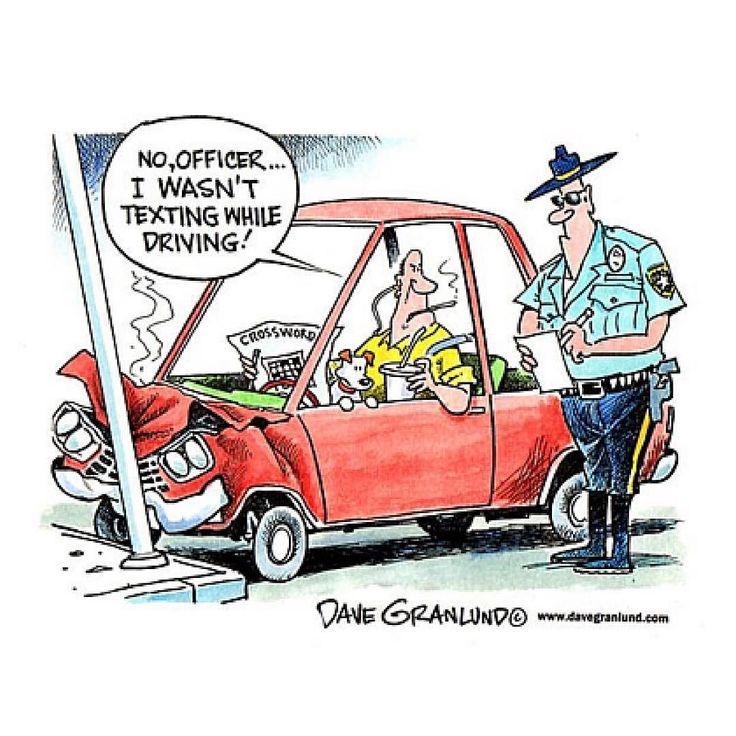
Distracted driving means: Not focusing on the road ahead and mirrors can lead to being caught unaware of changing conditions or situations in front of and around your vehicle. How many seconds or minutes a day have you driven blindly while distracted. Focusing on an object, person, task, or event not related to driving affects the driver’s awareness, decision making and/or performance. Think of the number of things you do like that and then add the average amount of time you are not focused on a daily basis.
Weekly Safety Topic: Following Too Close

Are you driving a safe enough distance from the vehicle ahead if it suddenly and unexpectedly stops?
Drive at a speed that allows you time to see and react to a panic stop of the vehicle in front of you.

How do I know if I am leaving enough space to the vehicle ahead?
At a minimum there should be at least 4 seconds of separation between your vehicle and the vehicle ahead of you.
When road and weather conditions deteriorate or traffic volume increases you should add more time between you and the vehicle ahead.
Extreme conditions such as rain, ice, snow and fog require adding space until you are sure you have time to suddenly stop without striking the vehicle ahead.

It is almost a certainty that if you strike a vehicle from the rear you will be partially if not solely responsible, especially when visibility, weather conditions and vehicle controls are degraded.
